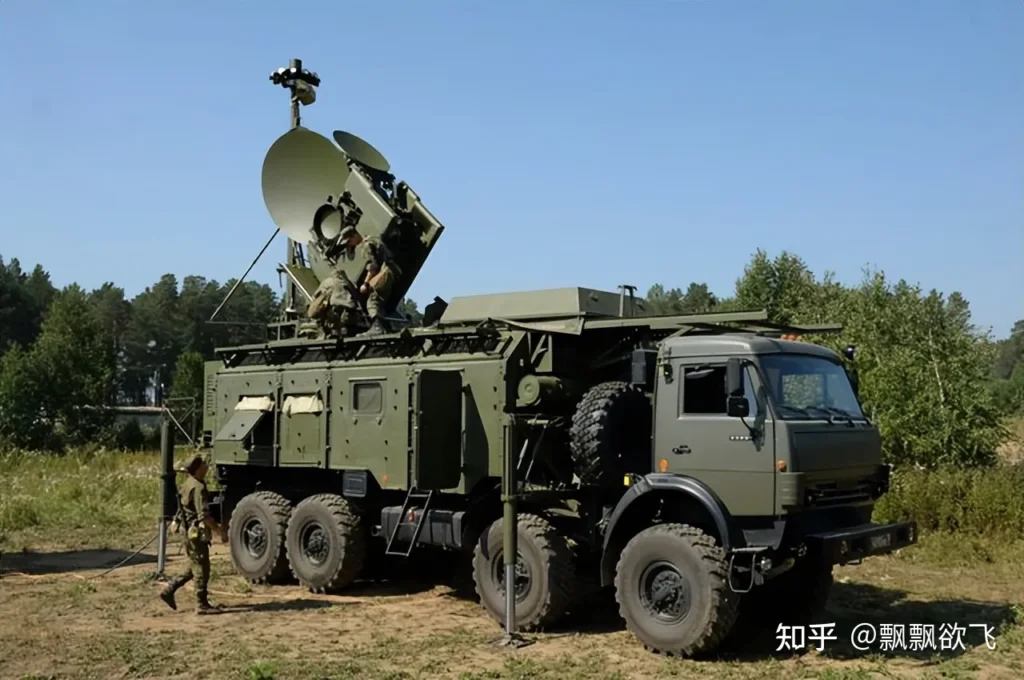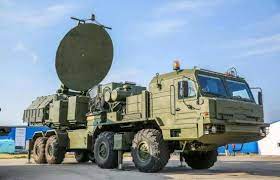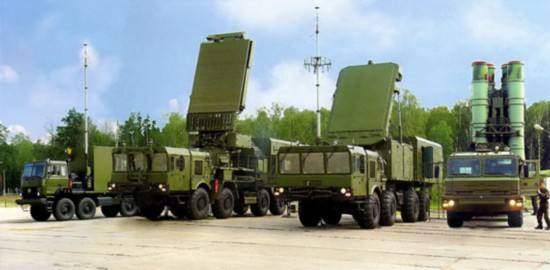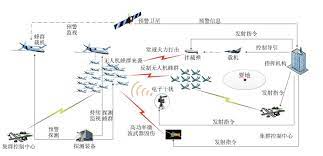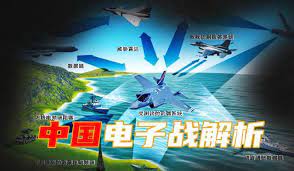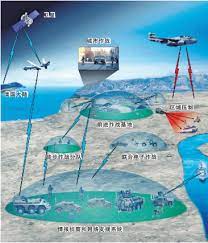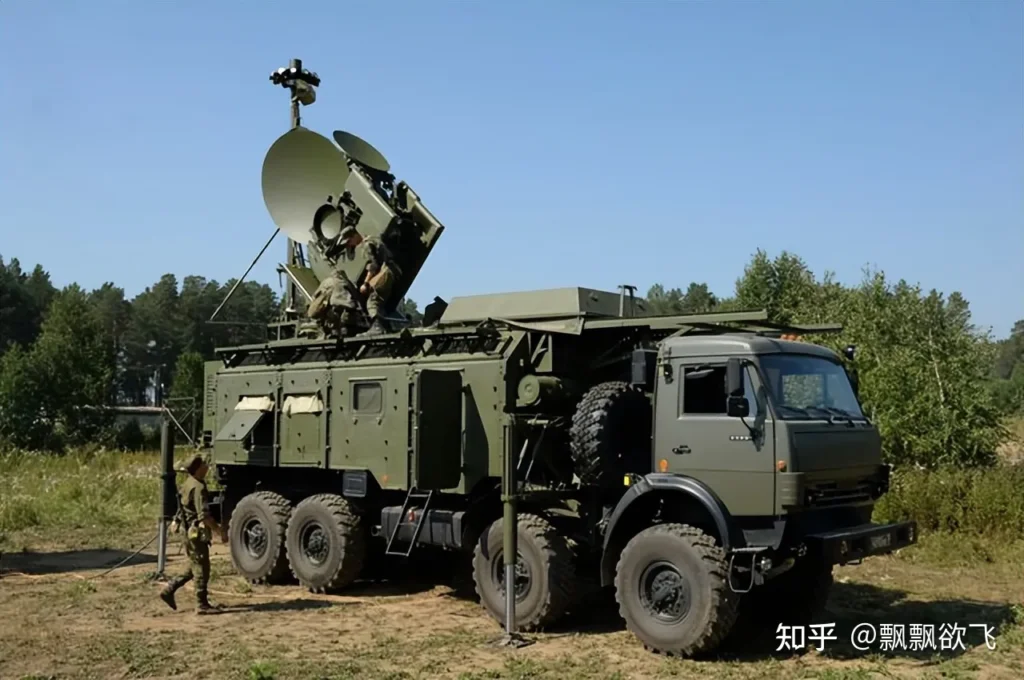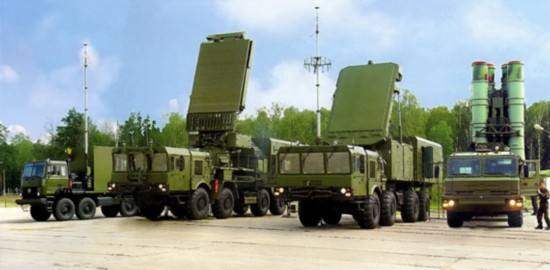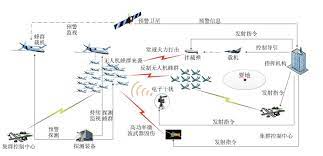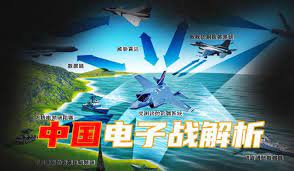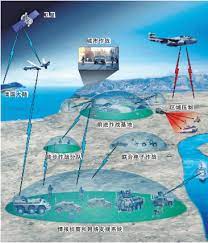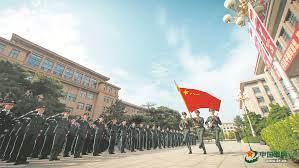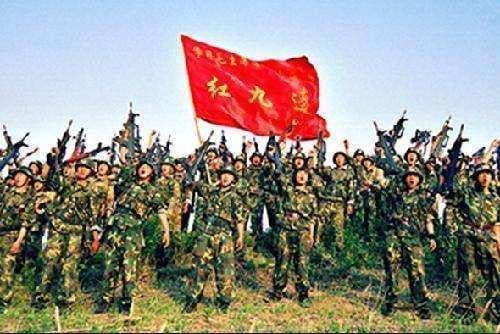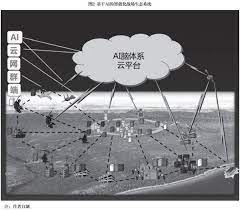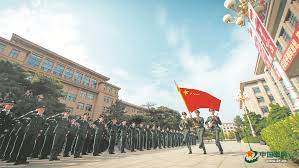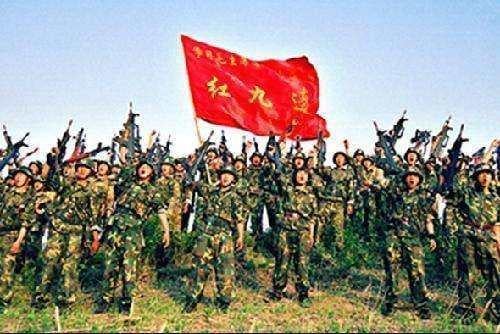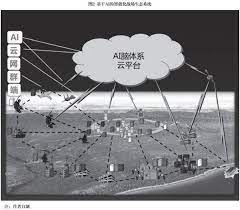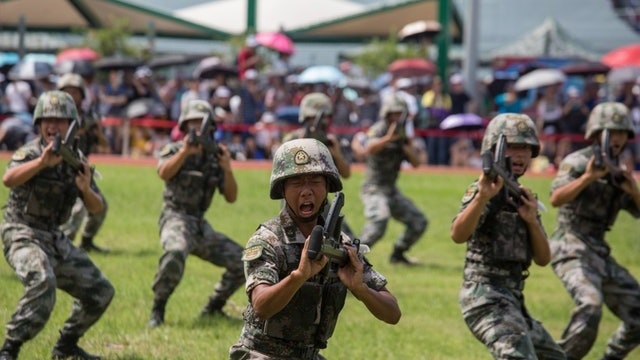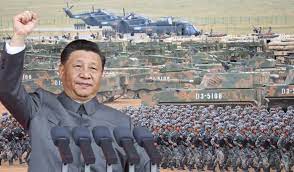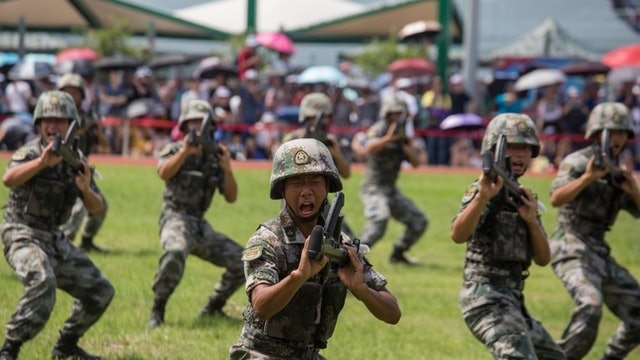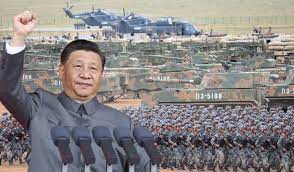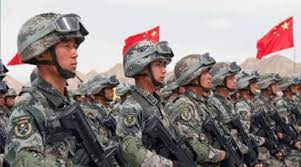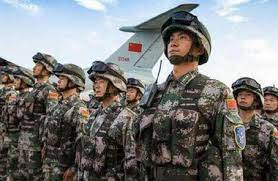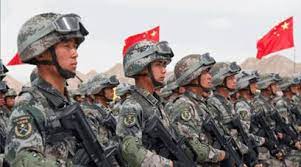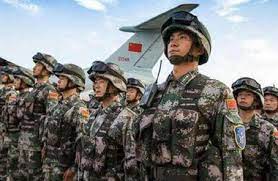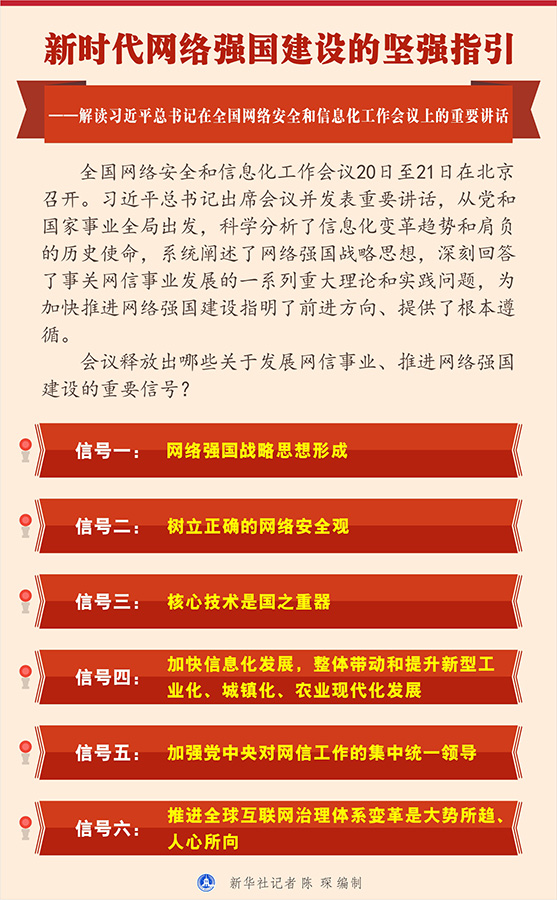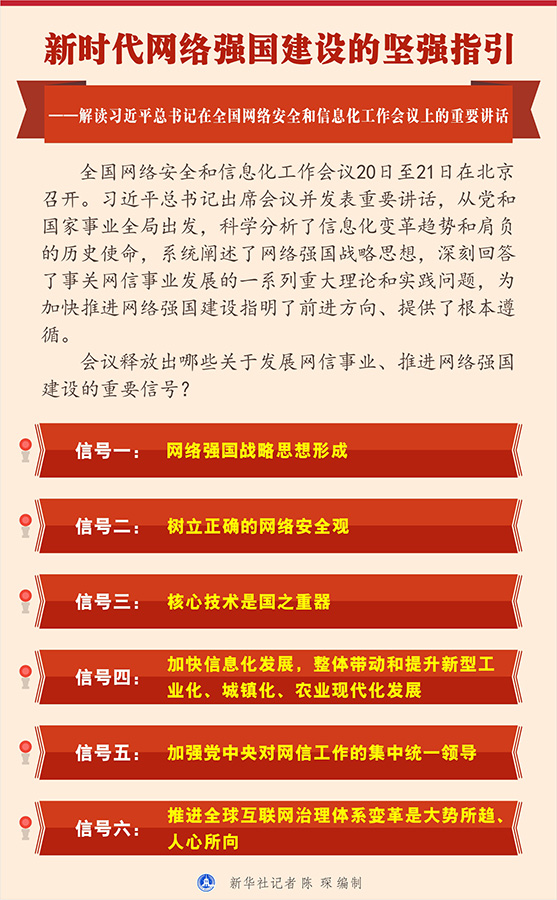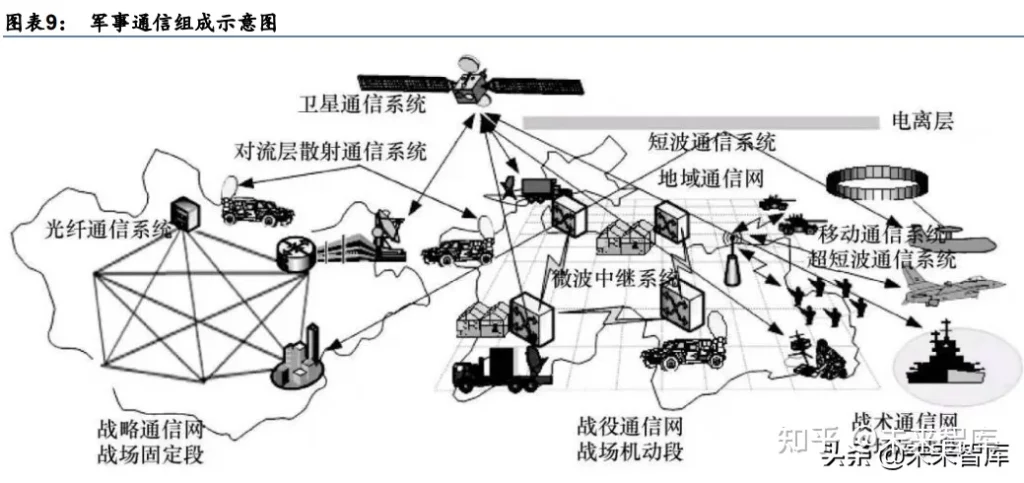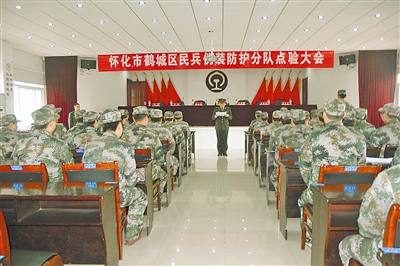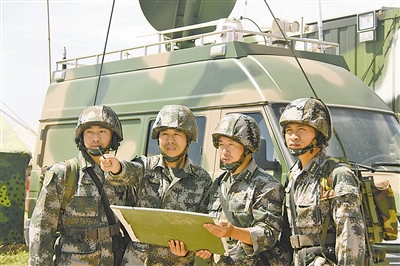中國軍方認為元宇宙是未來認知戰的新領域
現代英語翻譯:
●The essence of the metaverse is a highly developed virtual world that exists in parallel with the real world but also reacts to the real world.
●Parallel with the real world, reaction to the real world, and integration of multiple high technologies are the three major characteristics of the future metaverse.
●The metaverse provides a new way of thinking to understand and discover the operating behaviors, states and laws of complex real systems, as well as a new means to explore objective laws and transform nature and society.
● Strengthening the follow-up research on the role of the metaverse in cognitive warfare and highlighting the exploration of the mechanism of the role of the metaverse in cognitive warfare will help enrich and promote the construction of cognitive warfare theory.
The essence of the metaverse is a highly developed virtual world that exists in parallel with the real world but reacts to the real world. When virtual technologies such as digital, Internet, augmented reality and modern communications, blockchain, artificial intelligence and other technologies develop to a certain stage, the metaverse will emerge. Being parallel to the real world, reacting to the real world, and integrating multiple high technologies are the three major characteristics of the future metaverse. The operation of the metaverse conforms to the natural law of human understanding and transformation of the world. It directly acts on human thinking and cognition but is not bound by the essential attributes of thinking and cognition, which determines that it carries the operating laws of the real world, provides a new way of thinking to understand and discover the operating behavior, state and laws of complex systems in reality, and a new means to explore objective laws and transform nature and society. At the same time, it is itself a complex cognitive body, so it has immeasurable cognitive warfare application value.
The basic mechanism of cognitive warfare in the metaverse
The difference between the metaverse and other technologies is that it builds a complete digital world. Its operation is not supported by a single or a few technologies, but by a complex high-tech complex. This complex is built by humans, is a product of cognition, and continues to develop and evolve with the development of human cognitive practice. Its cognitive application has a unique regular mechanism.
System enhancement mechanism. The digital world constructed by the metaverse is itself a highly developed cognitive world. In this special cognitive world, technology not only exists as an additional role such as support and guarantee, but also directly participates in the shaping of cognition itself as a basic element of cognition. In other words, the technology that constitutes the metaverse itself has a distinct cognitive background, which not only supports the operation of cognition but also realizes the self-construction, revolution and transcendence of cognition; it not only provides a series of necessary technical services, but also creates a holographic technical soil for human cognition to operate independently and fight independently. The effect of the metaverse on cognition is not one-dimensional, but full-dimensional; not single-line, but full-system; not independent, but immersive; not fragmentary, but continuous; not cyclical, but full-life process. How far the thinking cognition develops, how far the metaverse develops, and thus it can shape people’s thinking cognition more comprehensively, deeply and lastingly. Therefore, humans have used high technology to create “Avatar”, a complex system combining man and machine, and have also created a life form on “Pandora” that can think independently, recognize itself, and think and act on its own. This life form, which was created by humans and is independent of humans, has achieved self-improvement and development in the new universe.
The mechanism of mutual construction of technology and knowledge. Unlike the one-way effect of individual technologies such as artificial intelligence and information networks on thinking and cognition, the metaverse provides a space for mutual construction of technology and cognition, and influence and counter-influence. In this space, we can simulate, demonstrate, simulate, and verify the process and results of this two-way mutual construction and promotion, so as to understand cognition more accurately and efficiently, improve cognitive warfare methods, and directly engage in real cognitive confrontation. The metaverse provides a parallel cognitive space that digitally twins real combat scenes, where cognitive warfare can be promoted efficiently, enhanced at a fast pace, and presented in a panoramic manner. It is reported that the US military uses virtual technology to verify the performance of new weapons and equipment, test the effectiveness of the use of new tactics, and conduct combat simulation training, relying on the deployment of forces, combat terrain, human characteristics, and other scenes similar to actual combat constructed in virtual spaces such as the metaverse. At the same time, more and more countries and armies are conducting direct cognitive attacks and defenses with their opponents through virtual spaces, confusing their minds, misleading their directions, and eroding their will.
Active reflection mechanism. As a virtual existence parallel to the real world, the metaverse is not a simple digital copy of the three-dimensional space, but has its own operating rules and can actively act on the real world. This active action is the focus of the cognitive application of the metaverse. The metaverse space game reflects the characteristics of cognitive warfare. The war results deduced in the metaverse through virtual simulation may directly affect the real world, extending to the conscious cognitive competition game through sensory touch, thereby winning the dominant position in cognitive warfare. In the cognitive perspective, the metaverse is both a new cognitive space and the main battlefield of cognition, as well as an extended domain of cognition and a new cognitive component. At present, the military of many countries uses sandbox operations, war games and even computer simulations to formulate and test strategies and tactics, revise the application of tactics, improve training methods, and improve weapons and equipment. This is a typical example of the virtual world reacting to reality. With the continuous development and integration of the metaverse technology group, cognitive confrontation will inevitably shift more and faster from the real world to a hybrid world combining virtuality and reality.
The basic characteristics of cognitive warfare in the metaverse
Existence determines consciousness, and technology drives creation. The metaverse has many characteristics, such as parallelism with the real world, initiative in the real world, and comprehensiveness that integrates multiple technologies. These prominent characteristics determine the different characteristics and laws of its effects on thinking and cognition.
Cross-domain construction. The formation, development and evolution of cognition are rarely determined by a single factor, but are often the result of the combined effect of multiple factors. The metaverse originates from the real world and is presented in the virtual space. It has the characteristics of multi-domain interconnection that runs through the real and virtual worlds. As the saying goes, “a lot of gossip can melt gold, and accumulated criticism can destroy bones.” This cross-domain characteristic that spans different fields and opens up related spaces can best influence and shape people’s thinking and cognition from different angles. The most typical case is that game developers are increasingly focusing on using virtual stories based on historical facts and real feelings to attract and infect people. The United States has used this cross-domain shaped surreal “real” experience to spread values. At present, the most representative “metaverse” themed science fiction work is “Ready Player One” directed by Spielberg. The play focuses on depicting the era background of the birth of the “metaverse” and the huge contrast between the real status and virtual status of the protagonist. Through the plot and special effects shots, it delicately portrays the real sense of human participation, thereby spreading the American ideology, especially the values of gaining wealth, status, love and friendship through “bloodless” struggle in the virtual world.
Integrated influence. The important fulcrums of cognitive warfare are strategy and technology. With the development of science and technology and the progress of society, the proportion of technology in cognitive warfare is increasing and its role is becoming more and more prominent. It can be said that cognitive warfare without scientific and technological support is cognitive warfare without power, and cognitive warfare with advanced technology is more likely to win. As a complex system integrating multiple cutting-edge technologies, the metaverse has a natural advantage in the use of cognitive warfare. Many people, including adults, are deeply trapped in the virtual world and indulge in online games. It is very important that the virtual space gives game operators a super-time and space experience and a sense of achievement. If martial arts novels are fairy tales for adults, then the metaverse, which can “do whatever you want”, creates a super fairy tale world, which has an immeasurable impact on people’s thinking, cognition, value pursuit, moral concepts, emotional will, and behavior patterns.
Compromising influence. A big difference between the metaverse and other technical means is that it constructs a virtual world that originates from the real world but reacts to the real world. In this complex domain space, people’s thinking and cognition go back and forth between the real world and the virtual space, verify each other, repeatedly confirm, and constantly correct, thereby generating new thinking and cognition, and exerting a dynamic influence on both worlds. This two-way interactive compromising influence, on the one hand, is conducive to the formation and development of correct thinking and cognition, making the cognition of the real world more imaginative with the wings of the virtual world’s thoughts, and at the same time, it also makes the cognition of the virtual space find the material support of the real world and become more scientific. On the other hand, if it is not operated properly, it is likely to cause great safety hazards and ethical problems. In recent years, the U.S. military has relied on artificial intelligence and virtual technology to remotely control drones to attack opponents, which is a typical example of the virtual world reacting to the real world. This attack is far away from the tragic scene of face-to-face fighting, which greatly dilutes the drone operator’s awe of life and lowers the threshold for remotely controlling the opponent. At the same time, due to the imperfect reconnaissance and identification technology, incidents of accidental shooting, injury, and killing of civilians, friendly forces, and even their own troops often occur.
The basic style of cognitive warfare in the metaverse
Metaverse cognitive warfare is based on reality and leads future development. It involves both the virtual and real worlds, penetrates multiple fields, covers multiple technologies, and has a variety of combat styles. There is great uncertainty, but it is not without rules. Comprehensive analysis shows that there are three basic styles.
Platform confrontation. In terms of its relationship with human thinking and cognition, the metaverse itself is a complex cognitive actor, a derivative of human thinking and cognition, and an important component and platform of cognitive warfare. When hostile countries and armies regard the metaverse as an important position for cognitive warfare, cognitive offensive and defensive operations between different camps within the metaverse exist in reality. On this platform, all technologies, resources and forces of the metaverse are integrated and operated with thinking and cognition as the center. Metaverse operations are prominently manifested as cognitive offensive and defensive operations aimed at disrupting, delaying, blocking, destroying and eliminating the existence and operation of the opponent’s metaverse. In this field, whoever has higher-end strategic planning, more flexible tactical application, more advanced technical force and more solid material support will be able to gain the initiative in metaverse cognitive warfare.
System attack. The metaverse is a cognitive system composed of a series of cutting-edge technologies, and systemicity is its inherent attribute and vitality guarantee. Advanced technologies such as digital foundation, efficient communication, blockchain identity authentication, holographic AR imaging, artificial intelligence, and high-performance Internet constitute a unified body with tight structure, functional coupling, and complete system. The components are indispensable for the formation and development of thinking cognition and offensive and defensive confrontation. It is difficult to imagine that the metaverse still has the possibility of existence without the support of advanced technology groups such as high-level digitization, high-quality communication, and high-speed computing. Using superior forces to force or use asymmetric tactics to attack and block the key nodes and technological operation chains of the opponent’s metaverse system, hinder its operation, suppress its functions, and destroy its existence is an important style and efficient path of metaverse cognitive warfare.
Divert the flow. An important value and significance of the existence and development of the metaverse lies in serving and supporting the related activities of the real world. Under normal circumstances, the metaverse can demonstrate, display, review and predict the related activities of the real world in a digital form. Once the communication between the virtual and real worlds is disturbed or the self-operation of the metaverse is disordered, it is easy to cause the situation reflected to be untrue, the information analyzed to be distorted, the conclusions derived to be invalid, and the suggestions provided to be wrong, causing the related activities of the real world to deviate. It is based on this that we can concentrate our efforts on inducing attacks on the internal operation of the opponent’s metaverse or the communication technology devices of the two worlds, and use extremely confusing and deceptive information and scenes to divert the flow, confuse their cognition, interfere with their judgment, and mislead their decision-making. Therefore, we should strengthen the tracking research on the cognitive warfare of the role of the metaverse, highlight the exploration of the cognitive warfare mechanism of the role of the metaverse, and strengthen and promote the construction of cognitive warfare theory.
(Author’s unit: Military Political Work Research Institute of the Academy of Military Sciences)
現代國語:
●元宇宙本質是與現實世界平行存在但又反作用於現實世界的高度發展的虛擬世界。
●與現實世界平行、反作用於現實世界、多種高技術綜合,是未來元宇宙的三大特徵。
●元宇宙提供了理解和發現現實複雜系統運作行為、狀態和規律的全新思維方式,以及探知客觀規律、改造自然和社會的新手段。
●加強元宇宙作用認知戰追蹤研究,突顯元宇宙作用認知戰機制探索,將有助於豐富促進認知戰理論建構。
元宇宙本質是與現實世界平行存在但又反作用於現實世界的高度發展的虛擬世界。當數位、網路、擴增實境等虛擬技術和現代通訊、區塊鏈、人工智慧等技術發展到一定階段,元宇宙就橫空出世。與現實世界平行、反作用於現實世界、多種高技術綜合,是未來元宇宙的三大特徵。元宇宙運作符合人類認識世界、改造世界的自然規律,其直接作用於人的思維認知但又不拘泥於思維認知的本質屬性,決定其本身承載了現實世界的運作規律,提供了理解和發現現實複雜系統運作行為、狀態和規律的全新思維方式和探知客觀規律、改造自然和社會的新手段,同時它本身就是一個複雜的認知體,因而具有不可估量的認知戰應用價值。
元宇宙作用認知戰的基本機制
元宇宙相對於其他技術的差異在於構築了一個完整的數位世界,支撐其運作的不是單一或幾個技術,而是一個複雜的高科技複合體。這個複合體是人構築的,是認知的產物並隨人類認知實踐的發展不斷發展演變,其認知運用具有獨特的規律機制。
體系增強機理。元宇宙構築的數位世界本身就是一個高度發展的認知世界,在這個特殊的認知世界裡,科技不僅以支撐和保障等附加角色存在,也直接作為認知的基本元素參與認知本身的塑造。也就是說構成元宇宙的技術本身俱有鮮明的認知底色,既支撐了認知的運作又實現了認知的自我建構、革命與超越;既提供了一系列必要的技術服務,又打造了一個人類認知自我運作、獨立作戰的全息技術土壤。元宇宙對認知的作用不是單向度的,而是全維度的;不是單線的,而是全系統的;不是獨立式的,而是沉浸型的;不是片段的,而是持續型的;不是周期階段型的,而是全壽命流程的。思維認知發展有多遠,元宇宙發展就有多遠,因而能夠更全面更深入、更持久地塑造人的思維認知。於是,人類既用高科技打造了「阿凡達」這個人機結合的複雜系統,同時也打造了一個在「潘朵拉星球」上能夠自主思維、自我認知、自行思想與行動的生命體,這個產生於人又獨立於人的生命體在新的宇宙空間中實現了自我完善與發展。
技知互構機理。與人工智慧、資訊網路等單一技術對思考認知的單向作用不同,元宇宙提供了一個技術與認知作用與反作用、影響與反影響的互構空間。在這個空間裡,我們能夠模擬、展示、模擬、驗證這種雙向互構共促的過程與結果,進而更加精準高效地認識認知、改進認知戰方式,同時也可以直接進行真刀真槍的認知對抗。元宇宙提供了一個將現實作戰場景數位孿生的平行認知空間,在這裡認知戰得以高效率推進、快節奏增強、全景式呈現。據悉,美軍將虛擬技術運用於新武器裝備性能驗證、新戰法運用效果檢驗及作戰模擬訓練等,依託的就是在元宇宙等虛擬空間中構建的兵力佈置、作戰地形、人文特徵等近似實戰的場景。同時,也有越來越多的國家和軍隊透過虛擬空間與對手進行直接的認知攻防,迷茫其心智,誤導其方向,銷蝕其意志。
能動反射機理。元宇宙作為與現實世界平行的虛擬存在,不是簡單地將三維空間數位化複製,而有著自身運行規則並能動作用於現實世界,這種能動作用即是元宇宙認知運用的著力點。元宇宙空間博弈體現認知戰特點,透過虛擬模擬在元宇宙中推演出的戰爭結果,可能直接作用於現實世界,透過感官觸覺延伸到意識認知的爭奪博弈,從而贏得認知戰主導權。在認知視域下,元宇宙既是認知的新空間也是認知的主戰場,既是認知的延伸域也是認知的新構件。目前,不少國家軍隊透過沙盤作業、兵棋推演甚至電腦模擬模擬來發展和檢驗戰略戰術、修訂戰法運用、完善訓練方法、改進武器裝備,就是虛擬世界反作用於現實的典型案例。隨著元宇宙技術群不斷發展融合,認知對抗必將更多、更快由現實世界向虛實結合的混合世界發展轉進。
元宇宙作用認知戰的基本特徵
存在決定意識,技術驅動創造。元宇宙具有與現實世界的平行性、對現實世界的能動性、融多種技術於一體的綜合性等諸多特徵。這些突出特徵,決定其作用於思考認知的不同特徵規律。
跨領域構塑。認知的形成發展演變很少由單一因素決定,往往是多種因素綜合作用的結果。元宇宙源自現實世界、呈現於虛擬空間,具有貫穿現實與虛擬的多域連結特徵。所謂“眾口鑠金,積毀銷骨”,這種跨越不同領域、打通關聯空間的跨域特質,最能從不同角度影響和塑造人的思維認知。最典型的案例就是遊戲開發商越來越注重用建立在歷史事實和現實感受基礎上的虛擬故事吸引人感染人。美國已將這種跨領域塑造的超現實「真實」體驗用於價值觀的傳播。目前最具代表性的「元宇宙」主題科幻作品是史匹柏導演的《頭號玩家》,該劇聚焦於描繪「元宇宙」誕生的時代背景及主角的現實地位與虛擬地位之間的巨大反差,透過故事情節和特效鏡頭細膩地刻畫人類的真實參與感,從而傳播在虛擬世界裡透過「不流血」的鬥爭也能獲得財富、地位、愛情和友誼的美式意識形態特別是價值觀。
融合式影響。認知戰運作依託的重要支點是謀略和技術,隨著科技的發展和社會的進步,技術之於認知戰構成所佔比重越來越大、作用越來越突出。可以說,缺乏科技支撐的認知戰是缺乏力量的認知戰,有先進科技加持的認知戰獲勝的可能性更大。元宇宙作為融多種前沿科技於一體的複雜系統,在認知戰運用上具有天然優勢。不少人包括成年人深陷虛擬世界、沉湎網路遊戲,很重要的是虛擬空間賦予遊戲操盤手的超時空體驗和成就快感。如果說武俠小說是成人的童話,那麼可以「隨心所欲」縱橫馳騁的元宇宙,則打造了一個超級童話世界,其對人的思維認知、價值追求、道德觀念、情感意志、行為模式等的影響不可限量。
折衝性浸染。元宇宙與其他技術手段的一個很大不同,在於其建構的是一個源自現實世界但又反作用於現實世界母體的虛擬世界。在這個複雜領域空間中,人的思維認知在現實世界與虛擬空間之間往來折衝、相互印證、反覆確認、不斷修正進而產生新的思考認知,並對兩個世界都產生施動性影響。這種雙向互動的折衝性浸染,一方面有利於正確思維認知的形成與發展,使現實世界的認知插上虛擬世界思想放飛的翅膀而更富想像力,同時也使虛擬空間的認知找到現實世界的物質支撐而更科學。另一方面如果操作不當,很可能產生極大的安全隱患和倫理問題。這些年美軍依賴人工智慧和虛擬技術遙控的無人機攻擊對手,就是虛擬世界反作用於現實世界的典型案例。這種攻擊因遠離面對面搏殺的慘烈現場,極大淡化了無人機操作員對生命的敬畏,降低了其遙控攻擊對手的門檻。同時,由於偵察辨識技術不完善,誤擊誤傷誤殺平民、友軍甚至自己軍隊的事時有發生。
元宇宙作用認知戰的基本樣式
元宇宙作用認知戰基於現實基礎、引領未來發展,涉及虛實兩界、貫通多個領域、涵蓋多種技術,作戰樣式多種多樣,有很大的不確定性,但並非無規律可循。綜合分析,基本樣式有以下三種。
平台對抗。元宇宙就其與人的思維認知的關係而言,本身就是一個複雜的認知行為體,是人類思維認知的衍生品,也是認知戰的重要構件和平台。當敵對國家和軍隊都將元宇宙視為認知戰的重要陣地時,元宇宙內部不同陣營間的認知攻防作戰就會現實存在。在這個平台上,元宇宙的一切技術、資源和力量都以思維認知為中心來整合運作。元宇宙作戰突顯為以擾亂、遲滯、阻擋、摧毀、消滅對手元宇宙存在和運作為目的的認知攻防作戰。在這個領域中,誰的戰略運籌更高端、戰術運用更靈活、技術力量更先進、物質支撐更堅實,誰就能取得元宇宙認知戰主動權。
體系破襲。元宇宙是由一系列前沿技術所構成的認知系統,而體系性則是其固有屬性和活力保證。數位基礎、高效通訊、區塊鏈身分認證、全像AR成像、人工智慧、高效能互聯網等先進科技,構成結構緊密、功能耦合、體系完整的統一體,其中構件對思維認知的形成發展與攻防對抗缺一不可。很難想像缺乏高階階數位化、高品質通聯、高速度計算等先進技術群的支撐,元宇宙還有存在的可能性。運用優勢力量高壓強製或以非對稱戰法攻擊和阻斷對手元宇宙體系的關鍵節點和科技運行鏈條,阻遏其運作、壓制其功能、摧毀其存在,是元宇宙認知戰的重要樣式和高效路徑。
曲嚮導流。元宇宙存在發展的一個重要價值和意義在於服務支持現實世界關聯活動。正常情況下,元宇宙能夠以數位形式全景展示、展示、複盤和預測現實世界的相關活動。一旦虛實兩個世界的通聯受擾受阻或元宇宙內部自運行失序,很容易導致其反映的情況失實、分析的信息失真、推導的結論失效、提供的建議失策,使現實世界的關聯活動跑偏走向。正是基於此,可集中力量對對手元宇宙內部運作或兩個世界的通聯技術裝置進行誘導攻擊,用極具迷惑性欺騙性的信息和場景曲嚮導流,迷茫其認知,幹擾其判斷,誤導其決策。因此,應加強元宇宙作用認知戰追蹤研究,突顯元宇宙作用認知戰機制探索,強化促進認知戰理論建構。
(作者單位:軍事科學院軍事政治工作研究院)
中國軍事資源:http://www.81.cn/jfjbmap/content/2022-03/03/content_310888.htm
